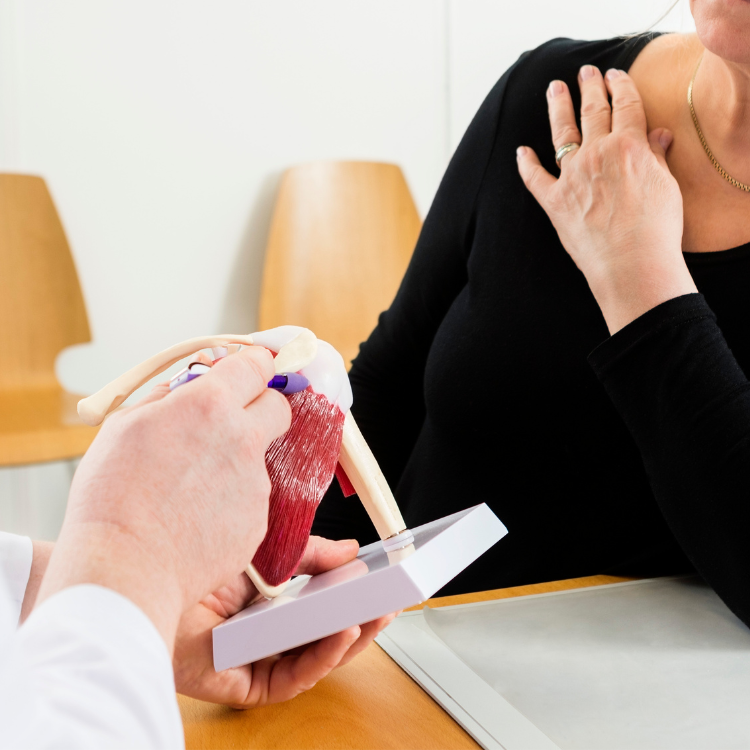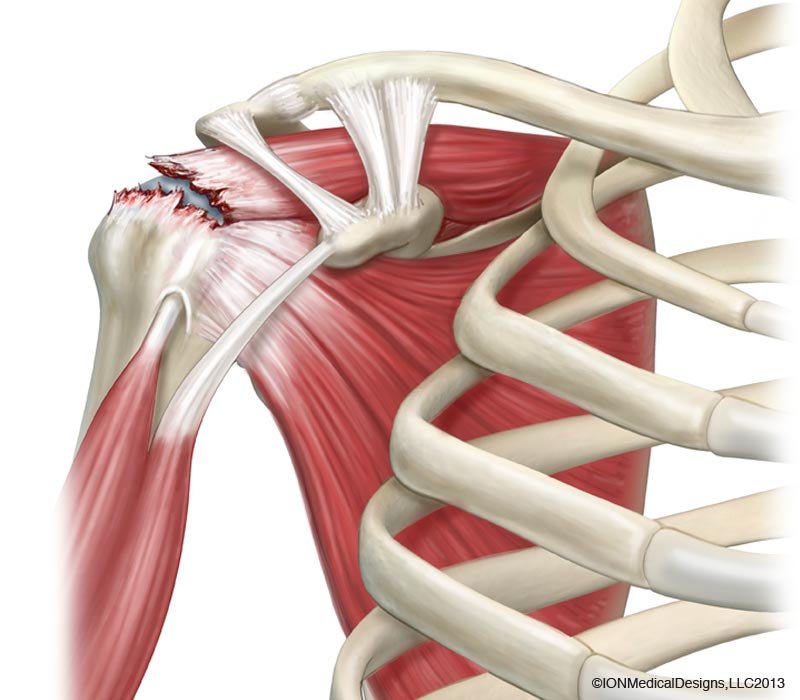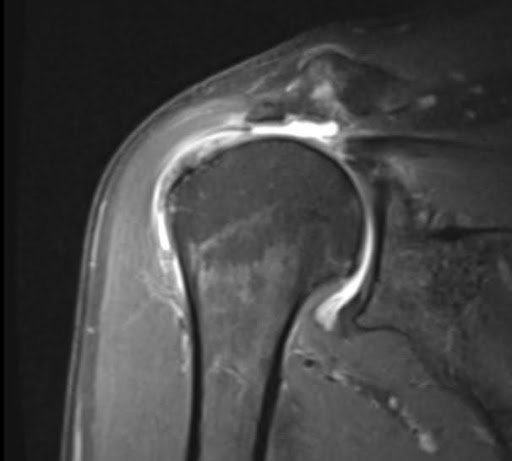Rotator Cuff Tears
Exploring the Rotator Cuff's Vital Role
A group of four muscles around the shoulder joint make up the rotator cuff. These include the supraspinatus, infraspinatus, teres minor, and subscapularis. The tendons which attach these muscles to the humerus are known as the rotator cuff. The rotator cuff has several important jobs, including stabilizing the shoulder, elevating and rotating the arm, and ensuring the head of the humerus stays securely in the shoulder joint. Rotator cuff tears are common. Of the four tendons, the most commonly injured tendon is the supraspinatus.
Signs and Symptoms of Rotator Cuff Injury
Wear and tear of the rotator cuff can happen with repetitive stress and injury. If your rotator cuff is injured, you may have pain and/or weakness when lifting your arm away from your body. You may have difficulty with basic activities like taking milk out of the refrigerator, washing your back and hair, or sleeping. A rotator cuff injury can cause limited shoulder motion and function.
Roatator Cuff Tears
Examples of shoulder MRIs with varying degrees of rotator cuff tears.

Types of
Rotator Cuff Pain
-
Inflammation in or around the tendons of the rotator cuff or mild fraying of the tendon. This can be quite painful, but shoulder strength remains normal. Almost all patients get better with nonsurgical treatment.
-
One or more of the rotator cuff tendons can have a partial tear. This means that part of the tendon is still attached to the bone. The tear can be on the bursal surface (the top of the tendon) or the articular surface (the side of the tendon facing the shoulder joint). The depth of the partial tear and the location of the tear, in addition to other factors, will determine the success rate of non-surgical treatment. Most patients have improvement in or resolution of pain with non-surgical treatment. While the tear will not heal with these treatments, many patients can be pain-free and return to all their activities. When conservative treatments are not successful in resolving pain, surgery is recommended to repair the tear in the rotator cuff.
-
When a rotator cuff tendon has completely torn off the bone, this is a full thickness tear. This can be caused by an acute injury or wear and tear. Full thickness rotator cuff tears are commonly painful when reaching and lifting with the elbow away from the body, and when bringing the arm back down by the side. Many patients will also have weakness lifting over shoulder height, throwing, or working overhead. Many patients have pain at night that wakes them from sleep. Some full-thickness rotator cuff tears from an acute injury are initially treated with surgery. Full-thickness tears from wear and tear are treated initially with nonsurgical treatments. Many patients can successfully treat full thickness rotator cuff tears with nonsurgical treatment. Although the tendon does not heal and remains torn, patients may have minimal or no pain and return to all their normal activities. Over time, many rotator cuff tears increase in size. This process is usually very slow, taking place over years.
Treatment for
Rotator Cuff Tears
-
Anti-inflammatory medications help alleviate pain and decrease inflammation. These are usually taken for two weeks at a time by patients who don’t have a medical contraindication.
-
Physical Therapy to learn range-of-motion and strengthening exercises for the shoulder. These exercises are important to strengthen and rebalance the muscles around the shoulder.
-
Corticosteroid Injections help decrease pain, swelling, and inflammation. The medication, a corticosteroid, is mixed with a local anesthetic, and injected under ultrasound guidance into or around the shoulder joint. While the local anesthetic will improve pain within a few minutes, it takes two to four days for the corticosteroid to decrease the inflammation.
Surgical Treatments
Dr. Walcott will discuss which treatment options are best for you depending on many different factors.
-
If non-surgical treatments such as anti-inflammatory medications, physical therapy and cortisone injection have failed to alleviate symptoms, surgery may be necessary to repair the rotator cuff tendons.
Arthroscopic rotator cuff surgery repairs the torn tendon(s) back to the bone. This is a minimally invasive surgery done through multiple small (1 cm) incisions around the shoulder. Working through an arthroscope, a combination of plastic and all-suture anchors are inserted into the bone. Strong suture is attached to each anchor and used to tie the tendon back to the bone.
Once the tendon is repaired, it takes a long time to heal. In most cases, the tendon is not fully healed until six months after surgery. The time it takes to get back to the activities that are important to you varies depending on the number of tendons that need to be repaired, the quality of the tendon, and the size of the tear.
The healing potential of a rotator cuff repair depends on many factors including:
Patient age, diabetes, smoking, rotator cuff tendon quality, health of the rotator cuff muscles, size of the tear.
-
If the tendon or muscle quality of the rotator cuff is poor, repairing the rotator cuff may no longer be an option. Dr Walcott will discuss the options with you taking into account the goals of surgery, preop range of motion, and status of your subscapularis tendon. These may include a partial repair, tendon transfer, superior capsular reconstruction, InSpace Balloon, as well as others.





